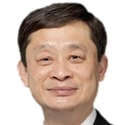Molecular Dynamics Simulation for Membrane Separation
A special issue of Membranes (ISSN 2077-0375).
Deadline for manuscript submissions: closed (10 June 2024) | Viewed by 3803
Special Issue Editors
Interests: multiscale materials modeling; molecular dynamics simulation; composite metal membrane; mechanical behavior of materials; dislocation dynamics; hydrogen embrittlement; hydrogen production/separation technology; atomic layer deposition
Interests: solid mechanics; computational mechanics; strength and fracture of materials; atomic-level simulation
Interests: atomic layer deposition; cold gas dynamics spraying deposition; hydrogen generation/filtration/storage; solar cell; fuel cell; nano fabrication; nano structure and materials; renewable energies; bio-fuel
Special Issues, Collections and Topics in MDPI journals
Special Issue Information
Dear Colleagues,
We are pleased to invite you to report your research findings in this Special Issue of Molecular Dynamics Simulation for Membrane Separation. Computational studies and molecular dynamics (MD) simulations have elucidated various aspects of membrane technology across diverse sub-sectors. Due to their intricate microporous structure and complex biochemical composition, separative membrane materials exhibit varying levels of complexity. Significantly, the incorporation of nanocomposite materials into membranes increases the complexity of the structure, particularly in the case of thin-film nanocomposites and porous separative nanocomposite materials. This complexity arises from nanoscale interactions. MD simulations, like other computational methodologies, aim to elucidate unresolved inquiries, shed light on regions of uncertainty, and offer plausible explanations and solutions.
This Special Issue aims to report how MD approaches could help to unravel the mystery of complex materials, how they interact with their environment, and how they physically, biologically, and chemically behave. MD could also be used for the investigation of current ongoing cases, or to predict the future of material science. We invite you to submit original research articles and reviews. The research areas may include (but are not limited to) molecular dynamics simulations in membrane-based:
i. hydrogen production, separation, and storage;
ii. fuel cell-based energy production;
iii. gas separation and purification;
iv. desalination, water, and wastewater treatment.
We look forward to receiving your contributions.
Dr. Sunday Temitope Oyinbo
Dr. Ryosuke Matsumoto
Prof. Dr. Tien-Chien Jen
Guest Editors
Manuscript Submission Information
Manuscripts should be submitted online at www.mdpi.com by registering and logging in to this website. Once you are registered, click here to go to the submission form. Manuscripts can be submitted until the deadline. All submissions that pass pre-check are peer-reviewed. Accepted papers will be published continuously in the journal (as soon as accepted) and will be listed together on the special issue website. Research articles, review articles as well as short communications are invited. For planned papers, a title and short abstract (about 100 words) can be sent to the Editorial Office for announcement on this website.
Submitted manuscripts should not have been published previously, nor be under consideration for publication elsewhere (except conference proceedings papers). All manuscripts are thoroughly refereed through a single-blind peer-review process. A guide for authors and other relevant information for submission of manuscripts is available on the Instructions for Authors page. Membranes is an international peer-reviewed open access monthly journal published by MDPI.
Please visit the Instructions for Authors page before submitting a manuscript. The Article Processing Charge (APC) for publication in this open access journal is 2200 CHF (Swiss Francs). Submitted papers should be well formatted and use good English. Authors may use MDPI's English editing service prior to publication or during author revisions.
Keywords
- membrane separation
- molecular dynamics simulation
- computational
- cell membrane
- desalination
- fuel cell
- transport
- selectivity
- diffusivity
- porosity
- wastewater
- nanocomposite membrane
- gas separation
- mechanical stability
- thermal behavior
Benefits of Publishing in a Special Issue
- Ease of navigation: Grouping papers by topic helps scholars navigate broad scope journals more efficiently.
- Greater discoverability: Special Issues support the reach and impact of scientific research. Articles in Special Issues are more discoverable and cited more frequently.
- Expansion of research network: Special Issues facilitate connections among authors, fostering scientific collaborations.
- External promotion: Articles in Special Issues are often promoted through the journal's social media, increasing their visibility.
- Reprint: MDPI Books provides the opportunity to republish successful Special Issues in book format, both online and in print.
Further information on MDPI's Special Issue policies can be found here.








